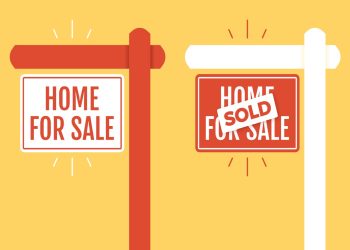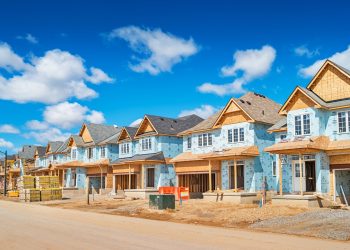The last few raucous years of real estate has been a mixed bag for first-time homebuyers. On one hand, raw numbers of those buyers ticked up through much of the pandemic, as younger families took advantage of low interest rates, pandemic relief and a strong job market to snatch up their first home. On the other hand, inventory shortages, spiraling prices and evolving economic conditions have prevented many from joining the ranks of homeowners over the last year or two.
Looking at this uneven landscape, a new analysis by BankRate.com is attempting to break down which metros are most—and least—friendly for these first-time buyers, ranking a handful of big, more industrial Midwest cities at the top of the list, while identifying several pricy cities in the West overall inhospitable.
Using 11 major data points in the realms of affordability, jobs, health, housing inventory and culture, the analysis ranked Pittsburgh, Pennsylvania as the overall best city for first-time home buyers—scoring particularly well in the areas of affordability and availability of homes. Los Angeles, California came in at the bottom, offering one of the least affordable housing markets and toughest job landscapes in the country, according to BankRate.
Seven out of the overall best ten markets for first-time buyers are in the Midwest, with two—Hartford, Connecticut and Buffalo, New York—in the Northeast, and one—Richmond, Virginia—in the South.
Though the full methodology was not released alongside the study, it leveraged a broad swath of high-level data—everything from unemployment to crime healthcare to how long houses remained on the market.
While some cities offered tantalizing opportunities attractive to first time buyers in one area, they fell far short in another. Birmingham, Alabama for instance came in as the 16 best market for first time buyers, even though the city was rated number 2 for jobs and number 6 for affordability, as bottom-five rankings in safety in wellness dragged that up-and-coming metro’s overall score down significantly.
Riverside, California rated 47 out of 50 cities overall despite above-average scores for safety and housing availability, with the analysis noting that nearby Los Angeles residents can find similar homes for significantly cheaper in that suburb.
But a long commute on California’s infamously clogged highways and relatively low local wages offset these advantages, they added.
Jordan Levine, California Association of REALTORS® vice president and chief economist, told RISMedia earlier this year that Riverside houses were mostly being snapped up by outsiders after the city was identified in a different analysis as being at-risk for a market downturn.
“Those are areas where there has been a lot of in-migration since the onset of the pandemic in 2020 and 2021, according to the Department of Finance numbers,” he says. “Especially when you compare it to the incomes of the pre-existing population base there—that’s not to say I’m not concerned about housing affordability, but I think that tends to kind of exacerbate the kind of risk factors that show up in those numbers.”
Regionally speaking
The highest overall ranked metro in the West for first-time buyers was Salt Lake City, Utah, coming in at a middling 20—though it was the top overall city for jobs, according to the study.
The South boasted five cities in the top 20 overall rankings—besides Richmond at six and Birmingham at 16, the Washington D.C metro area weighed in at 17 with Raleigh, North Carolina right after at 18, followed by Louisville, Kentucky at 19.
Raleigh was rated number one for safety, however, and two other southern cities made the top ten by that metric—Richmond, and Clearwater, Florida, which tied at nine.
All except one of the top ten cities in the wellness category were in the West or Northeast, with San Francisco, California; New York City, New Yokr; Los Angeles, California; Boston, Massachusetts and Salt Lake City, Utah making up the top five. Washington D.C. came in at six in that ranking.
On the other hand, top cities for housing availability were predominantly in the Midwest and South, with Kansas City, Missouri; Pittsburgh, Pennsylvania; New York City, New York; Milwaukee, Wisconsin and Cleveland, Ohio at the top. A large majority housing-rich metros—15 of the top 20 cities—are in those two regions, which have received much more investment from builders and developers in recent years.
No city was rated in the top 25 or higher for all five categories, but a few metros were relatively well-rounded, with no single issue weighing them down. Minneapolis, Minnesota boasted top 15 ranking in every category except jobs (where it came in 26 out of 50). Richmond boasted top 20 rankings in affordability, housing availability, wellness and safety but was also weighed down by a poor labor market (ranked 36). Atlanta, Georgia also offered a balanced experience for first-time buyers, with a wellness rank of 27 its lowest score.












